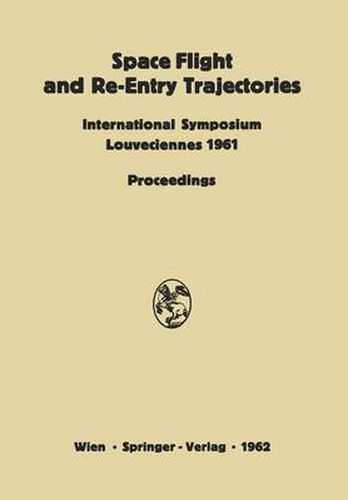Readings Newsletter
Become a Readings Member to make your shopping experience even easier.
Sign in or sign up for free!
You’re not far away from qualifying for FREE standard shipping within Australia
You’ve qualified for FREE standard shipping within Australia
The cart is loading…






This title is printed to order. This book may have been self-published. If so, we cannot guarantee the quality of the content. In the main most books will have gone through the editing process however some may not. We therefore suggest that you be aware of this before ordering this book. If in doubt check either the author or publisher’s details as we are unable to accept any returns unless they are faulty. Please contact us if you have any questions.
In this and a following issue (Vol. VIII, 1962, Fasc. 2-3) of Astronautica Acta there will appear the papers presented at the first international symposium sponsored by the International Academy of Astronautics of the International Astronautical Federation. The theme of the meeting was Space Flight and Re-Entry Trajectories. It was held at Louveciennes outside of Paris on June 19-21, 1961. Sixteen papers by authors from nine countries were presented; attendees numbered from 80 to 100. The organizing committee for the symposium was as follows: Prof. PAUL A. LIBBY, Polytechnic Institute of Brooklyn, U.S.A., Chairman; Prof. LuiGI BROGLIO, University of Rome, Italy; Prof. B. FRAEIJS DE VEUBEKE, University of Liege, Belgium; Dr. D. G. KING-HELE, Royal Aircraft Establishment, Farnborough, Rants, United Kingdom; Prof. J. M. J. KooY, Royal Military School, Breda, Netherlands; Prof. JEAN KovALEVSKY, Bureau des Longitudes, Paris, France; Prof. RuDOLF PESEK, Academy of Sciences, Prague, Czechoslovakia. The detailed arrangements for the meeting were made in a most satisfactory manner by Dr. FRANK J. MALINA, Deputy Director of IAA and Mr. A. R. WEILLER, Acting Secretary of IAA. Prof. THEODORE VON KARMAN, Director of IAA, in his remarks closing the symposium indicated his satisfaction at the interest being shown in the science of the future. The papers which follow will make a permanent contribution to the literature of this science.
$9.00 standard shipping within Australia
FREE standard shipping within Australia for orders over $100.00
Express & International shipping calculated at checkout
This title is printed to order. This book may have been self-published. If so, we cannot guarantee the quality of the content. In the main most books will have gone through the editing process however some may not. We therefore suggest that you be aware of this before ordering this book. If in doubt check either the author or publisher’s details as we are unable to accept any returns unless they are faulty. Please contact us if you have any questions.
In this and a following issue (Vol. VIII, 1962, Fasc. 2-3) of Astronautica Acta there will appear the papers presented at the first international symposium sponsored by the International Academy of Astronautics of the International Astronautical Federation. The theme of the meeting was Space Flight and Re-Entry Trajectories. It was held at Louveciennes outside of Paris on June 19-21, 1961. Sixteen papers by authors from nine countries were presented; attendees numbered from 80 to 100. The organizing committee for the symposium was as follows: Prof. PAUL A. LIBBY, Polytechnic Institute of Brooklyn, U.S.A., Chairman; Prof. LuiGI BROGLIO, University of Rome, Italy; Prof. B. FRAEIJS DE VEUBEKE, University of Liege, Belgium; Dr. D. G. KING-HELE, Royal Aircraft Establishment, Farnborough, Rants, United Kingdom; Prof. J. M. J. KooY, Royal Military School, Breda, Netherlands; Prof. JEAN KovALEVSKY, Bureau des Longitudes, Paris, France; Prof. RuDOLF PESEK, Academy of Sciences, Prague, Czechoslovakia. The detailed arrangements for the meeting were made in a most satisfactory manner by Dr. FRANK J. MALINA, Deputy Director of IAA and Mr. A. R. WEILLER, Acting Secretary of IAA. Prof. THEODORE VON KARMAN, Director of IAA, in his remarks closing the symposium indicated his satisfaction at the interest being shown in the science of the future. The papers which follow will make a permanent contribution to the literature of this science.